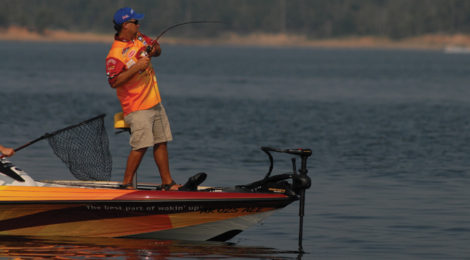
Choosing the Right Stick
Proper rod selection helps anglers maximize performance on the water
by Matt Williams
Few topics stir more debate among hardcore bass anglers than fishing rods do. What one guy likes in a rod another might hate and vice versa. That’s because no two rods are created equal.
There are literally hundreds of makes and models of rods out there that are made with assorted materials and configured into various lengths and actions using all sorts of line guides, reel seats and other tricked out components designed to increase everything from casting distance to power and sensitivity.
There was a time – many moons ago – when choosing a good rod was as simple as grabbing one off the rack and giving it a “good” shake to see if it felt too flimsy or too stiff for the task. I still catch myself giving rods the old shake test every now and then, but it is hardly an accurate test in the modern day world of “specialty rods.”
Today there are rods designed especially for performing specific techniques and for throwing an array of lures ranging in size from 1/4 ounce to 10 ounces or more. That’s not to say you can’t use the same rod for throwing a 1/4-ounce Pop-R and a 3/4 ounce, because you can. However, you would be much better served by using two different rods specifically designed in length and action for those two styles of baits.
Texas bass pro Zell Rowland offered up one of the best analogies I’ve ever heard regarding fishing rod selection as we cast for bass on Lake Fork several years ago.
“Fishing rods are to fisherman what golf clubs are to a golfer,” said Rowland. “They are tools, and each tool has a purpose. Sure, you can tee off with a putter. But you will always get better distance with a driver.”







